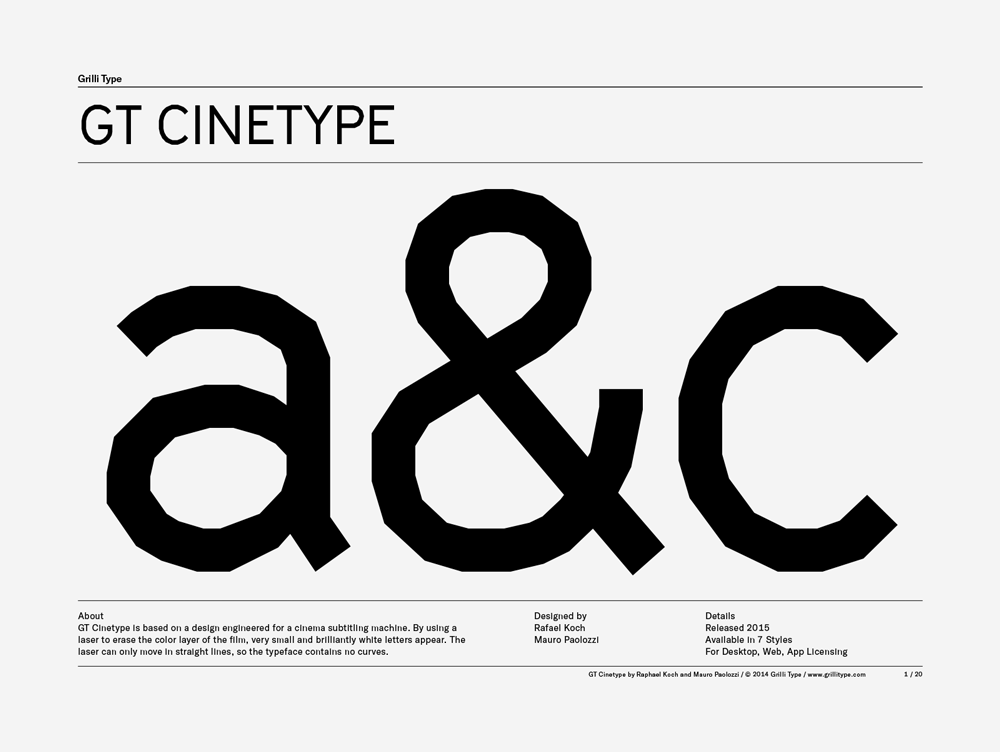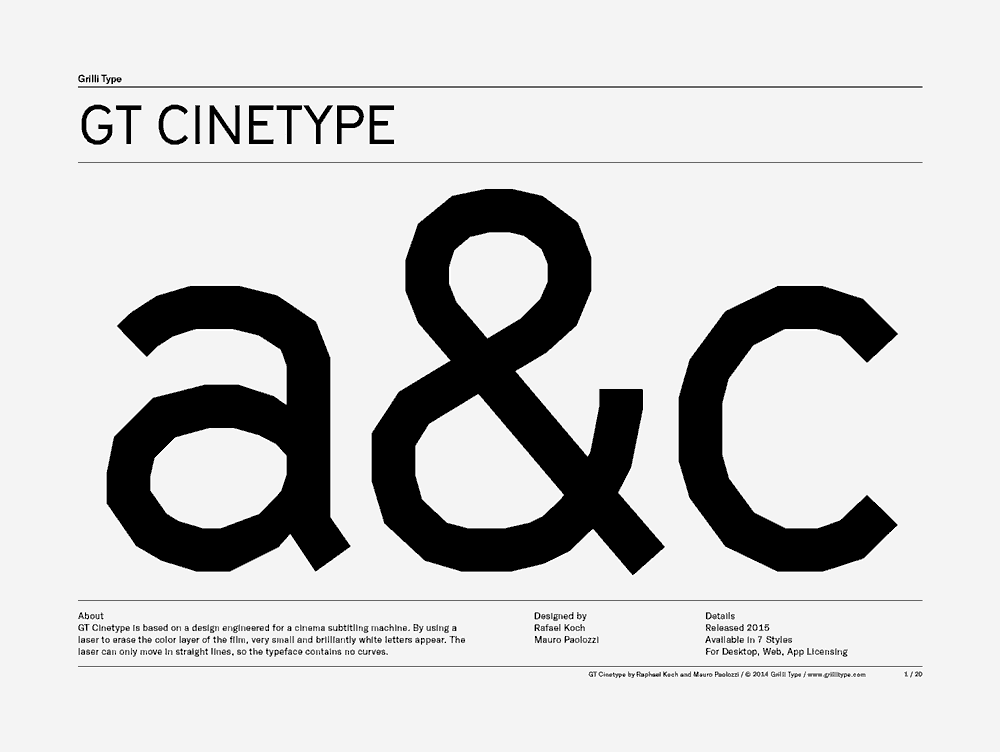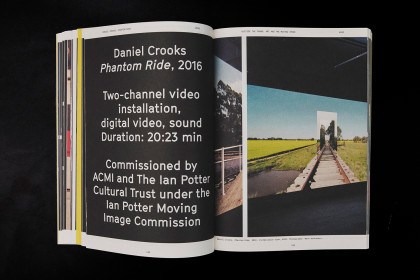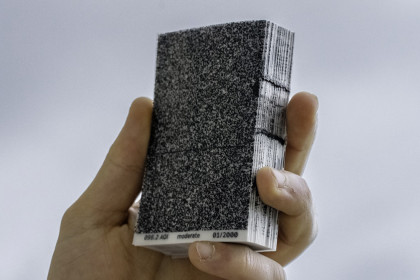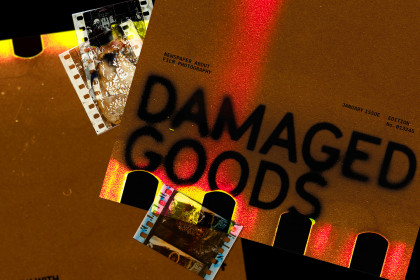GT Cinetype
Family overview
- Light Italic
- Regular Italic
- Bold Italic
- Mono
- LightJodorowsky’s Dune 2013 by Frank Pavich with Alejandro Jodorowsky, Michel Seydoux, H.R. Giger
- Light ItalicGodzilla 1977 by Ishirô Honda with Raymond Burr, Akihiko Hirata, Momoko Kôchi
- RegularPer un pugno di dollari 1964 by Sergio Leone with Clint Eastwood, Gian Maria Volontè, Marianne Koch
- Regular ItalicTroll 2 1990 by Claudio Fragasso with Michael Stephenson, George Hardy, Margo Prey
- BoldOldeuboi 2003 by Chan-wook Park with Min-sik Choi, Ji-tae Yu, Hye-jeong Kang
- Bold ItalicCasablanca 1942 by Michael Curtiz with Humphrey Bogart, Ingrid Bergman, Paul Henreid
- MonoBefore Sunrise 1995 by Richard Linklater with Ethan Hawke, Julie Delpy, Andrea Eckert
- Settings
Typeface information
GT Cinetype is based on a design engineered for a cinema subtitling machine. By using a laser to erase the color layer of the film, very small and brilliantly white letters appear. The laser can only move in straight lines, so the typeface contains no curves.
Typeface features
OpenType features enable smart typography. You can use these features in most Desktop applications, on the web, and in your mobile apps. Each typeface contains different features. Below are the most important features included in GT Cinetype’s fonts:
- CASE
- Case sensitive forms
(ROBOCOP)
- ONUM
- Oldstyle figures
10.03.1985
Typeface Minisite
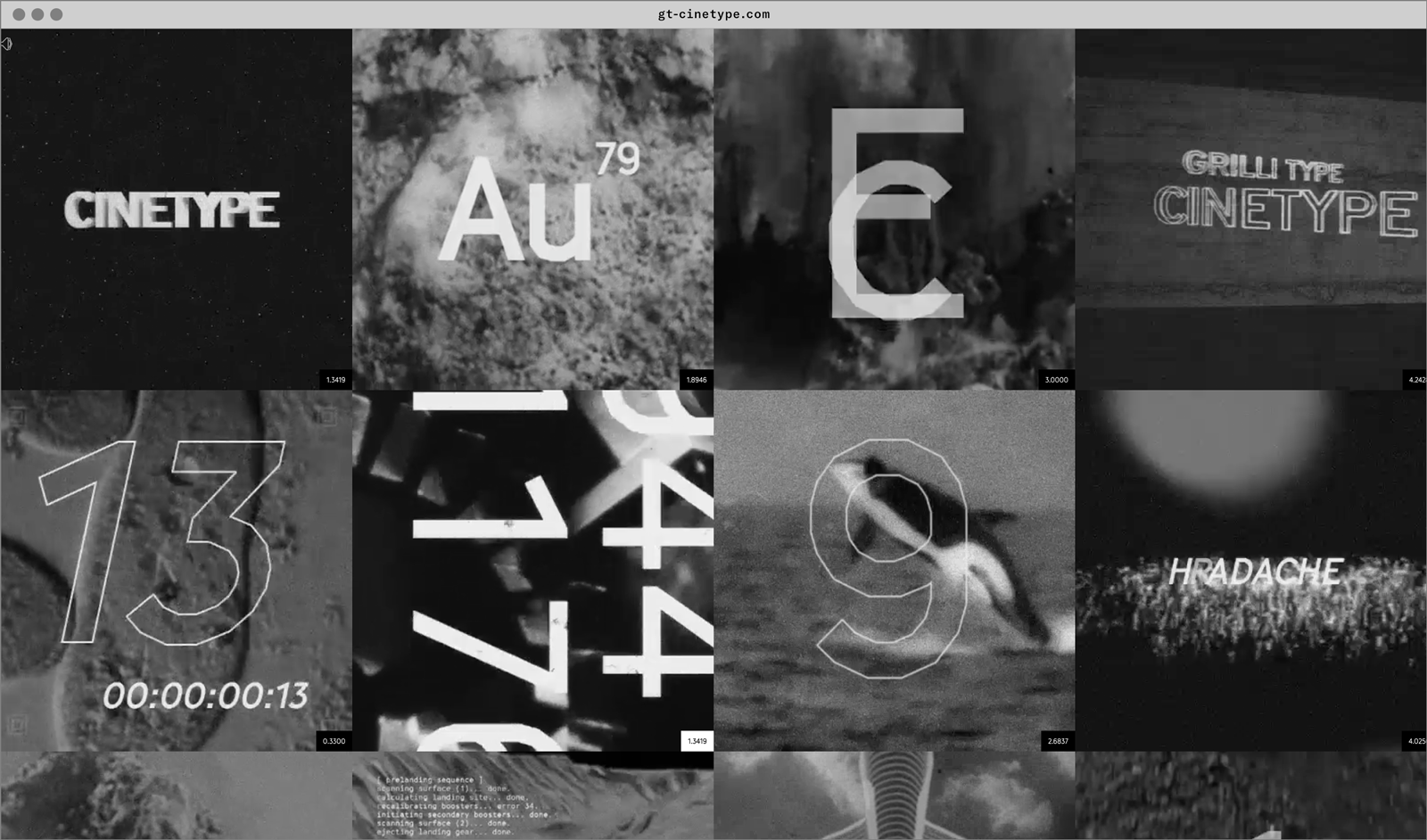
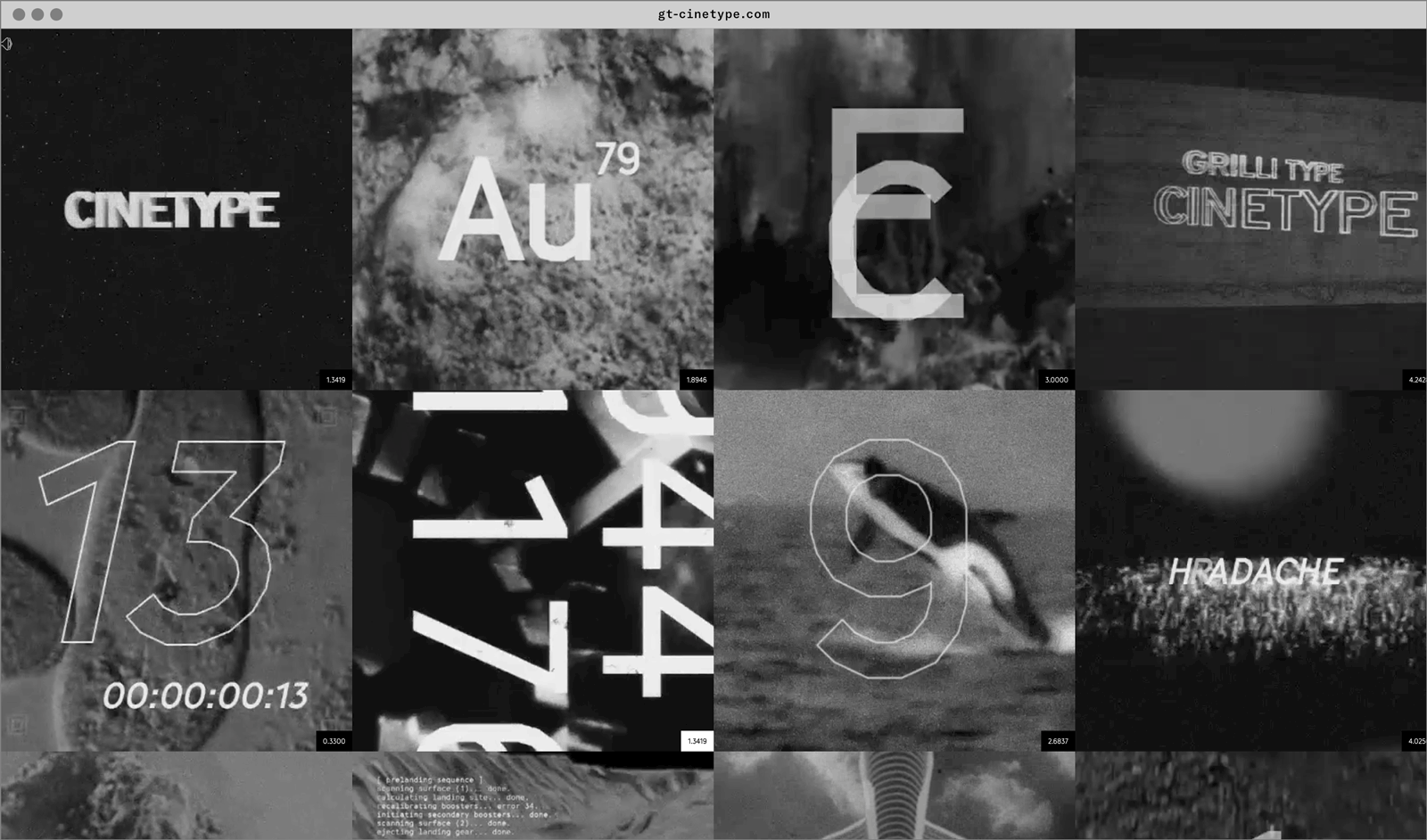
- Visit the GT Cinetype minisite to discover more about the typeface family’s history and design concept.
GT Cinetype in use
